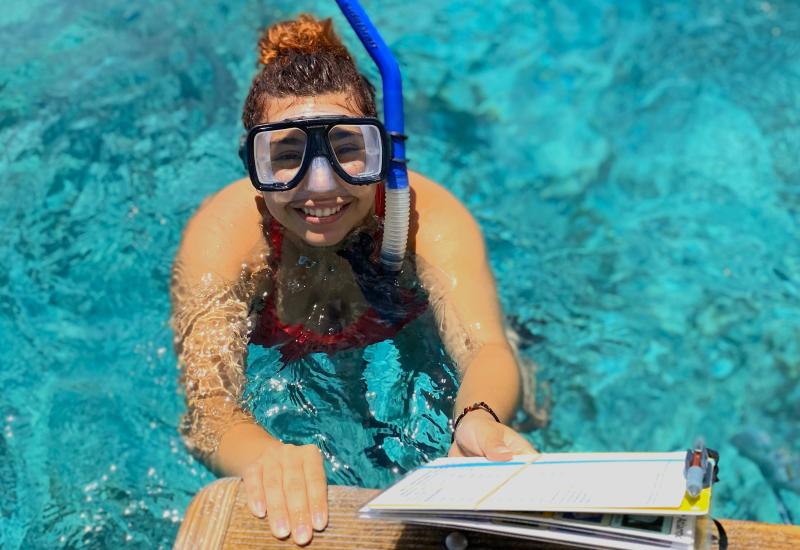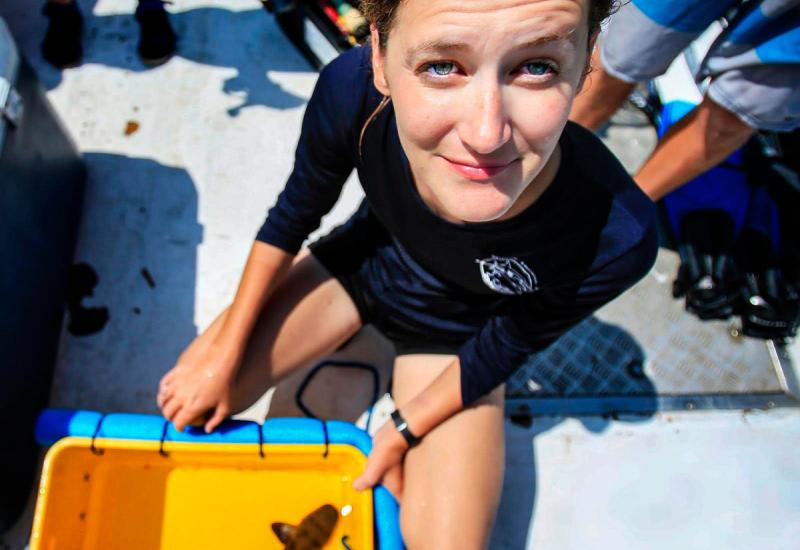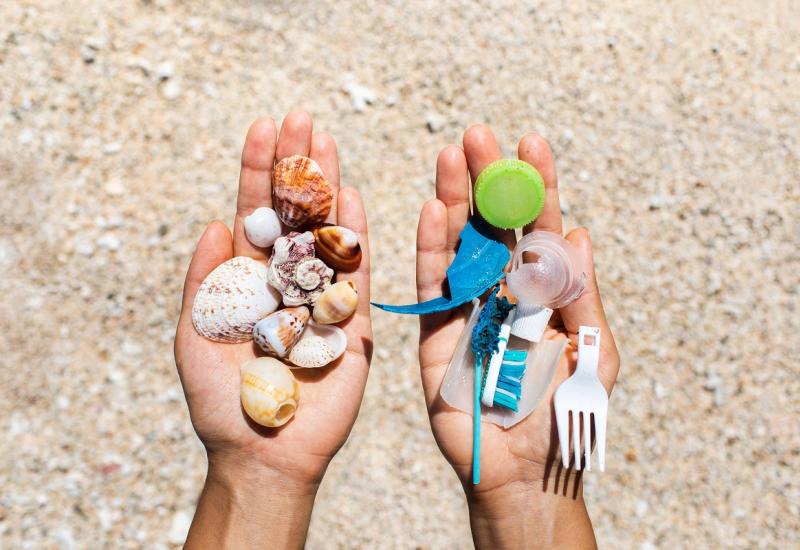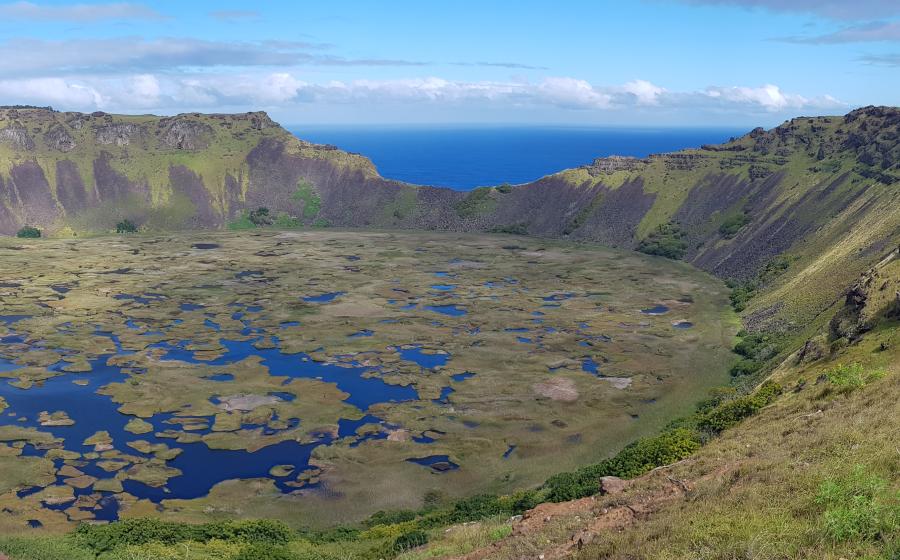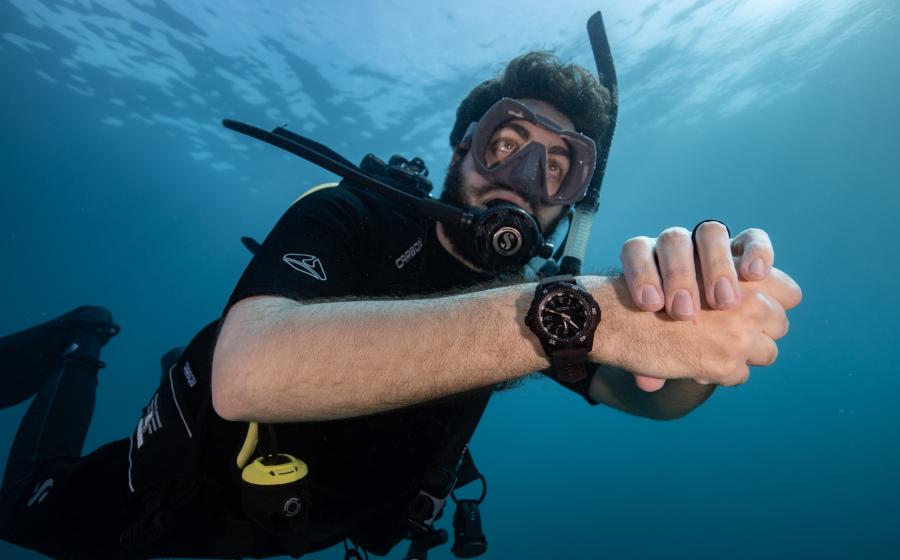Coral Restoration Foundation Plants 'Trees' Underwater

Coral Restoration
Tanya G. Burnett
It’s a gorgeous spring day in Kralendijk, and Augusto Montbrun is so keyed up, he’s practically vibrating. The dive-ops manager at Bonaire’s Buddy Beach and Dive Resort is watching a dream come to life: Coral Restoration Foundation’s Ken Nedimyer — recently named a CNN Hero for his innovative work developing a system of easily installed nurseries for coral propagation — is in the house.
Nedimyer’s team is about to begin a project — the first of its kind in the Caribbean — on Buddy Dive’s house reef. After meeting Nedimyer at DEMA, Montbrun brought the idea to Buddy Dive’s owners; a couple of years’ worth of government paperwork later, and “now it’s a reality,” Montbrun says, beaming.
Eager to see what the fuss is about, a small group of curious divers hanging around the deck plunges in after the CRF team. Surprisingly near Buddy Dive’s docks, on a sandy plain shallow enough for snorkelers and kids to get a good view too, the stark Christmas tree shapes of Bonaire’s “demonstration” nursery — a more protected garden exists off tiny Klein Bonaire — comes into view, along with Nedimyer and assistants at work budding the garden. One kneels on the sand, assembling small pieces of coral, while others attach prepared buds to the PVC and fiberglass “trees” — reminiscent of old-school TV antennas — and still others film them at work on the Bonaire Reef Pilot Project.
Intent on their efforts, the CRF team still manages to make it look easy — and fun.
Fast-forward just three months, and “the results are amazing,” Montbrun says. Te area has experienced so much growth in staghorn and elkhorn corals that the local reef-restoration group was scheduled to cut some of the already overgrown pieces at the end of August.
Why would a place like Bonaire, with healthy reefs protected for decades, be worried about coral restoration? Because nobody knows better than an islander that coral reefs offer coastal protection, support biodiversity and provide essential habitat for a wide range of recreational and commercially important species of fish and invertebrates. Although coral reefs make up only a fraction — less than 1 percent — of the marine environment, they provide homes for one-third of all known marine species.
The important corals of the genus Acropora — elkhorn coral, Acropora palmata, and staghorn coral, Acropora cervicornis — were once the dominant reef-building coral species in the Caribbean and the Florida Keys, where Coral Restoration Foundation was founded. But due to stressors including disease, rising sea temperatures, reduced herbivore populations (such as the virtual disappearance of spiny urchins), increased nutrient loads and algal competition, Acropora corals have experienced an 85 percent decline. In 2006, these hard corals were listed under the U.S. Endangered Species Act as “threatened,” and in 2008 were included on the international IUCN list as “critically endangered.” Te remaining populations of Acropora are now so spread out that they are functionally extinct, thereby hindering natural recovery.
CRF’s successful offshore nursery and coral outplant program — which educates and trains volunteers, and engages local schools and businesses — started as a high school project for Nedimyer and his daughter. “It became a consuming passion to try to find ways to protect and restore coral reefs,” the CRF founder says
CRF also plays a vital role in the biological conservation of these two species and the future of Florida’s coral-reef ecosystem. CRF’s coral-nursery sites in the Upper and Lower Florida Keys provide secure locations for offshore coral husbandry. At these sites, propagation efforts over the past seven years have increased the number of corals growing from just several small fragments to well over 25,000 specimens. These small, two- to three-inch fragments grow into small colonies measuring six to eight inches in as little as eight months, at which time they are ready to be outplanted. CRF nurseries are refuges, and allow unique genetic lineages to be maintained and fragmented into thousands of small colonies. When outplanting, CRF strategically places several different genotypes in close proximately to each other so that natural recovery is enhanced.
The Coral Restoration Foundation’s education program blends classroom instruction with field-based work in the offshore coral nursery and restoration sites on local reefs. These land- and field- based programs provide opportunities and encourage hands-on learning experiences through a One Day Nursery Program and a Two to Tree Day Restoration Program. As part of each program, CRF gives PowerPoint lectures, hands-on demonstrations, and video presentations that provide a background and context for students and adult volunteers. CRF staff also regularly give presentations to local and regional groups including dive clubs, civic groups, marine-aquarium clubs, school groups, and marine-resource managers.
CRF’s volunteer program engages local residents as well as international tourists wanting to make a difference while diving where there are nurseries. There’s even an Introduction to Coral Restoration PADI specialty offered by local instructors — such “voluntourism” is a unique way to have fun while diving, and give back to the environment at the same time.
“This isn’t just about me,” Nedimyer says. “It’s about engaging a lot of people and training people, and I think it has a lot of hope. I’m convinced this is the solution that can work.”
Plant a Seed, Adopt a Coral
Coral Restoration Foundation is a grass-roots organization that depends heavily upon public support for both hands-on work and monetary contributions. Education, action and results are the principles that have helped CRF plant more than 3,000 corals on local reefs for the past six years. Without volunteers, this would not be possible. Here are some ways you can help:
- Donate. Sponsor a reef site for restoration in your name or business, a coral-tree nursery or simply make a charitable contribution.
- Adopt a Coral. Sponsor a coral to be grown on your behalf.
- Volunteer. Join a dive-program event to help restore the reef.
- Like us. Like us on Facebook, follow us on Twitter, and tell others about us.
- Join us. Host a fundraising event to sponsor a reef site.
- Visit coralrestoration.org or e-mail us at programs@coralrestoration.org.

Tanya G. Burnett
It’s a gorgeous spring day in Kralendijk, and Augusto Montbrun is so keyed up, he’s practically vibrating. The dive-ops manager at Bonaire’s Buddy Beach and Dive Resort is watching a dream come to life: Coral Restoration Foundation’s Ken Nedimyer — recently named a CNN Hero for his innovative work developing a system of easily installed nurseries for coral propagation — is in the house.
Nedimyer’s team is about to begin a project — the first of its kind in the Caribbean — on Buddy Dive’s house reef. After meeting Nedimyer at DEMA, Montbrun brought the idea to Buddy Dive’s owners; a couple of years’ worth of government paperwork later, and “now it’s a reality,” Montbrun says, beaming.
Eager to see what the fuss is about, a small group of curious divers hanging around the deck plunges in after the CRF team. Surprisingly near Buddy Dive’s docks, on a sandy plain shallow enough for snorkelers and kids to get a good view too, the stark Christmas tree shapes of Bonaire’s “demonstration” nursery — a more protected garden exists off tiny Klein Bonaire — comes into view, along with Nedimyer and assistants at work budding the garden. One kneels on the sand, assembling small pieces of coral, while others attach prepared buds to the PVC and fiberglass “trees” — reminiscent of old-school TV antennas — and still others film them at work on the Bonaire Reef Pilot Project.
Intent on their efforts, the CRF team still manages to make it look easy — and fun.
Fast-forward just three months, and “the results are amazing,” Montbrun says. Te area has experienced so much growth in staghorn and elkhorn corals that the local reef-restoration group was scheduled to cut some of the already overgrown pieces at the end of August.
Why would a place like Bonaire, with healthy reefs protected for decades, be worried about coral restoration? Because nobody knows better than an islander that coral reefs offer coastal protection, support biodiversity and provide essential habitat for a wide range of recreational and commercially important species of fish and invertebrates. Although coral reefs make up only a fraction — less than 1 percent — of the marine environment, they provide homes for one-third of all known marine species.
The important corals of the genus Acropora — elkhorn coral, Acropora palmata, and staghorn coral, Acropora cervicornis — were once the dominant reef-building coral species in the Caribbean and the Florida Keys, where Coral Restoration Foundation was founded. But due to stressors including disease, rising sea temperatures, reduced herbivore populations (such as the virtual disappearance of spiny urchins), increased nutrient loads and algal competition, Acropora corals have experienced an 85 percent decline. In 2006, these hard corals were listed under the U.S. Endangered Species Act as “threatened,” and in 2008 were included on the international IUCN list as “critically endangered.” Te remaining populations of Acropora are now so spread out that they are functionally extinct, thereby hindering natural recovery.
CRF’s successful offshore nursery and coral outplant program — which educates and trains volunteers, and engages local schools and businesses — started as a high school project for Nedimyer and his daughter. “It became a consuming passion to try to find ways to protect and restore coral reefs,” the CRF founder says
CRF also plays a vital role in the biological conservation of these two species and the future of Florida’s coral-reef ecosystem. CRF’s coral-nursery sites in the Upper and Lower Florida Keys provide secure locations for offshore coral husbandry. At these sites, propagation efforts over the past seven years have increased the number of corals growing from just several small fragments to well over 25,000 specimens. These small, two- to three-inch fragments grow into small colonies measuring six to eight inches in as little as eight months, at which time they are ready to be outplanted. CRF nurseries are refuges, and allow unique genetic lineages to be maintained and fragmented into thousands of small colonies. When outplanting, CRF strategically places several different genotypes in close proximately to each other so that natural recovery is enhanced.
The Coral Restoration Foundation’s education program blends classroom instruction with field-based work in the offshore coral nursery and restoration sites on local reefs. These land- and field- based programs provide opportunities and encourage hands-on learning experiences through a One Day Nursery Program and a Two to Tree Day Restoration Program. As part of each program, CRF gives PowerPoint lectures, hands-on demonstrations, and video presentations that provide a background and context for students and adult volunteers. CRF staff also regularly give presentations to local and regional groups including dive clubs, civic groups, marine-aquarium clubs, school groups, and marine-resource managers.
CRF’s volunteer program engages local residents as well as international tourists wanting to make a difference while diving where there are nurseries. There’s even an Introduction to Coral Restoration PADI specialty offered by local instructors — such “voluntourism” is a unique way to have fun while diving, and give back to the environment at the same time.
“This isn’t just about me,” Nedimyer says. “It’s about engaging a lot of people and training people, and I think it has a lot of hope. I’m convinced this is the solution that can work.”
Plant a Seed, Adopt a Coral
Coral Restoration Foundation is a grass-roots organization that depends heavily upon public support for both hands-on work and monetary contributions. Education, action and results are the principles that have helped CRF plant more than 3,000 corals on local reefs for the past six years. Without volunteers, this would not be possible. Here are some ways you can help:
- Donate. Sponsor a reef site for restoration in your name or business, a coral-tree nursery or simply make a charitable contribution.
- Adopt a Coral. Sponsor a coral to be grown on your behalf.
- Volunteer. Join a dive-program event to help restore the reef.
- Like us. Like us on Facebook, follow us on Twitter, and tell others about us.
- Join us. Host a fundraising event to sponsor a reef site.
- Visit coralrestoration.org or e-mail us at programs@coralrestoration.org.


